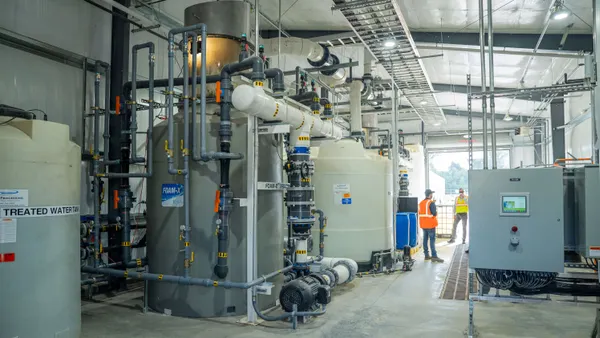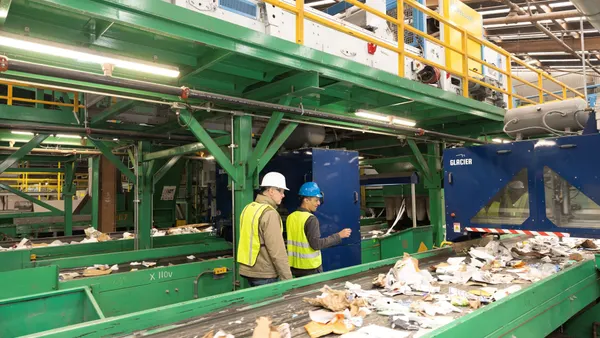Dive Brief:
- The U.S. waste and recycling industry generated an estimated $74 billion revenue in 2018, according to research by Waste Business Journal (WBJ). Publicly-traded companies now account for 60% of that, followed by private companies at more than 20% and municipal governments at nearly 20%.
- WBJ reports 455.7 million tons of MSW were generated in 2018, of which an estimated 29% was recovered for recycling or organics processing. WBJ projects the U.S. has 20 years of average landfill capacity remaining, with the greatest amounts left in southern and western states.
- Per WBJ, Waste Management and Republic Services represent nearly 50% of currently remaining U.S. landfill capacity. Publicly-traded companies reportedly handled close to 60% of all U.S. MSW at landfills they either owned or operated in 2018.
Dive Insight:
WBJ's research, considered some of the most in-depth data available, has informed industry analysis for nearly 30 years. This latest round of information was presented last month at WasteExpo and released in multiple reports, including a directory of more than 9,500 processing and disposal sites across the country.
The industry's overall $74 billion revenue figure is up from $70 billion in 2016, and a significant increase from $41 billion in 1998. Over that period, municipal governments have seen their market share decrease from 30% to 20% of annual revenues as the ongoing privatization trend moves power into the hands of private and public companies.
While collection operations remain the highest source of revenue for all involved, the shift to privatization may be most significant on the disposal side.
Following a trend set in motion by the Resource Conservation and Recovery Act of 1976 – and various other federal or state regulations in the decades since – it's become increasingly expensive to operate landfills in the U.S. Industry executives confirmed during a recent series of interviews with Waste Dive that they expect that trend to continue. Paired with larger corporate consolidation patterns across multiple industries, this has meant more and more landfill capacity is managed by fewer and fewer for-profit entities.
According to analysis shared by Jim Thompson, principal of WBJ, Waste Management has accounted for anywhere from 25-30% of the U.S. landfill volume since 1998. If the proposed Advanced Disposal Services acquisition eventually goes through, the industry giant's market share could surpass that of the municipal sector.
Looking further down the list, it's apparent that 20 years worth of mergers and acquisitions have also concentrated larger shares of landfill volume in the hands of Republic Services and Waste Connections. Given that some amount of divestments may be required in the Advanced merger, the industry's #2 and #3 companies could be poised to accelerate that growth over the next year.
Based on these factors and more, Thompson anticipates that a handful of publicly-traded companies could see their share of overall industry revenue increase to 70% within the next 5-10 years.










